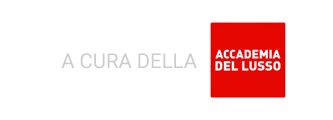Lussi diversi
Ci si può saziare con una fettuccina burro e alici oppure innevarla di tartufo bianco d’Alba a quattromila euro al chilo. In entrambi i casi i morsi della fame verranno placati, ma nel secondo alla necessità avremmo aggiunto uno sfarzo inutile, ossia non necessario. E infatti, Coco Chanel che di queste cose si intendeva, sosteneva che il lusso è una necessità che inizia quando la necessità finisce. Nell’immaginario collettivo, del resto, è lusso tutto ciò che è sovrabbondante, inutile ed esorbitante le normali necessità. Insomma, lusso è circondarsi o consumare cose preziose ed esclusive, accessibili solo a pochissimi privilegiati. In quest’accezione, includo un bene intangibile inestimabile, che è negletto rispetto a quelli materiali che appagano la definizione di lusso: il tempo. Warren Buffett (un altro che di lussi se ne intende) lo ha definito “la risorsa più preziosa che abbiamo”. Del resto, quante volte abbiamo dovuto rinunciare a qualcosa non perché fosse sfacciatamente costosa, ma per una più prosaica e banale mancanza di tempo? Quante volte gli obblighi lavorativi o le corvée familiari ci hanno negato il lusso, appunto, di prenderci, dedicarci e goderci del tempo, magari solo per contemplare l’universo osservando il nostro ombelico?
State sospirando, vero? Smettete subito e cominciate piuttosto a respirare. Poi sedetevi, chiudete gli occhi e riflettete. Siete davvero sicuri che il vostro tempo sia già interamente occupato o limitato al minimo?
Alla soglia dei miei cinquanta, a questa domanda ho dato una risposta ribelle, anzi oserei dire rivoluzionaria per i miei standard di pigrizia e strafottenza. Mi sono detto: il tempo è mio e lo gestisco io. Sembra la parafrasi di un più noto slogan sessantottino, ma se ci pensate bene è una banalissima verità. E non è questione di discernere tra importanza e urgenza. Non è cioè una questione di priorità, perché se così fosse rischieremmo di cadere ancora una volta nel circolo vizioso del necessario (spesso per altri) che occupa il voluttuario (nostro), e saremmo inevitabilmente portati (a continuare) ad anteporre i presunti bisogni degli altri, ai nostri. Infondo, quando ne hai tanto di tempo non ci pensi, ma quando cominci a consumarlo, ti accorgi che non ti basta mai e dedicarselo senza rimorsi, diventa il lusso più grande che possiamo permetterci.
Così, ad inizio autunno di due anni fa, in pieno rush lavorativo, ho scelto (si è una scelta ovviamente) di dedicare dieci giorni al mio più grande piacere: viaggiare in moto. Non ci ho pensato due volte: ho attrezzato la motocicletta e sono scappato dove potevo: in Sardegna. Timidamente ho dato gas un giovedì sera, così si notava meno la mia assenza durante il week-end. Poi ho riflettuto che anche questo scrupolo era una concessione alle necessità altrui e ho calato una saracinesca mentale inespugnabile, tagliando fuori tutto ciò che potesse distrarmi o distogliermi dal mio personalissimo lusso. Per dieci splendidi giorni mi sono letteralmente estraniato da tutte le routine, immergendomi nel piacere del tutto egoistico e appagante di dondolare i cilindri della mia moto, senza fretta, senza mete obbligate, senza itinerari preconfezionati, nelle curve di alcune tra le più belle strade di una delle isole più affascinanti del Mediterraneo. Mi sono fermato quando ho voluto. Ho chiacchierato con chi mi pareva. Ho percorso tratti inesplorati e ho respirato l’aria salmastra mista alla resina dei pini della costa di Arbatax e quella intrisa di mirto, sale e polvere della costa occidentale del Sinis. Mi sono inebriato di Vermentino di Gallura e Cannonau di Mamoiada e ho assaporato la cucina del mare e quella dei monti, girovagando con calma, come i viaggiatori del Grand Tour dell’800. E me la sono goduta. Oh come la sono goduta! Al punto che l’ho rifatto, più e più volte e in altri luoghi. L’esperienza è stata talmente appagante da uscirne stregato, anzi dipendente. Sono diventato un lussurioso, ma non di beni tangibili superflui. Ma del mio esclusivissimo e personalissimo tempo. Insomma, quando ne ho voglia e non solo quando posso, io scelgo di prendermi del tempo e dedicarmelo. Viaggiare in moto non è necessariamente la scelta obbligata. Posso semplicemente leggere un libro o scriverne uno, visitare un museo o riscoprire il gusto di andare al cinema, interrompendo la catena di consumazioni televisive on-demand. Oppure, passeggiare senza meta, contemplando i miei pensieri o senza averne affatto. Da solo? Si! Anche. Perché no? L’importante è consumare del tempo a mio esclusivo piacere e vantaggio. Senza rimorsi. E anche se dovessi averne, è sempre meglio che soffrire di rimpianti.
Ma non spargete troppo la voce, altrimenti che lusso sarebbe?























